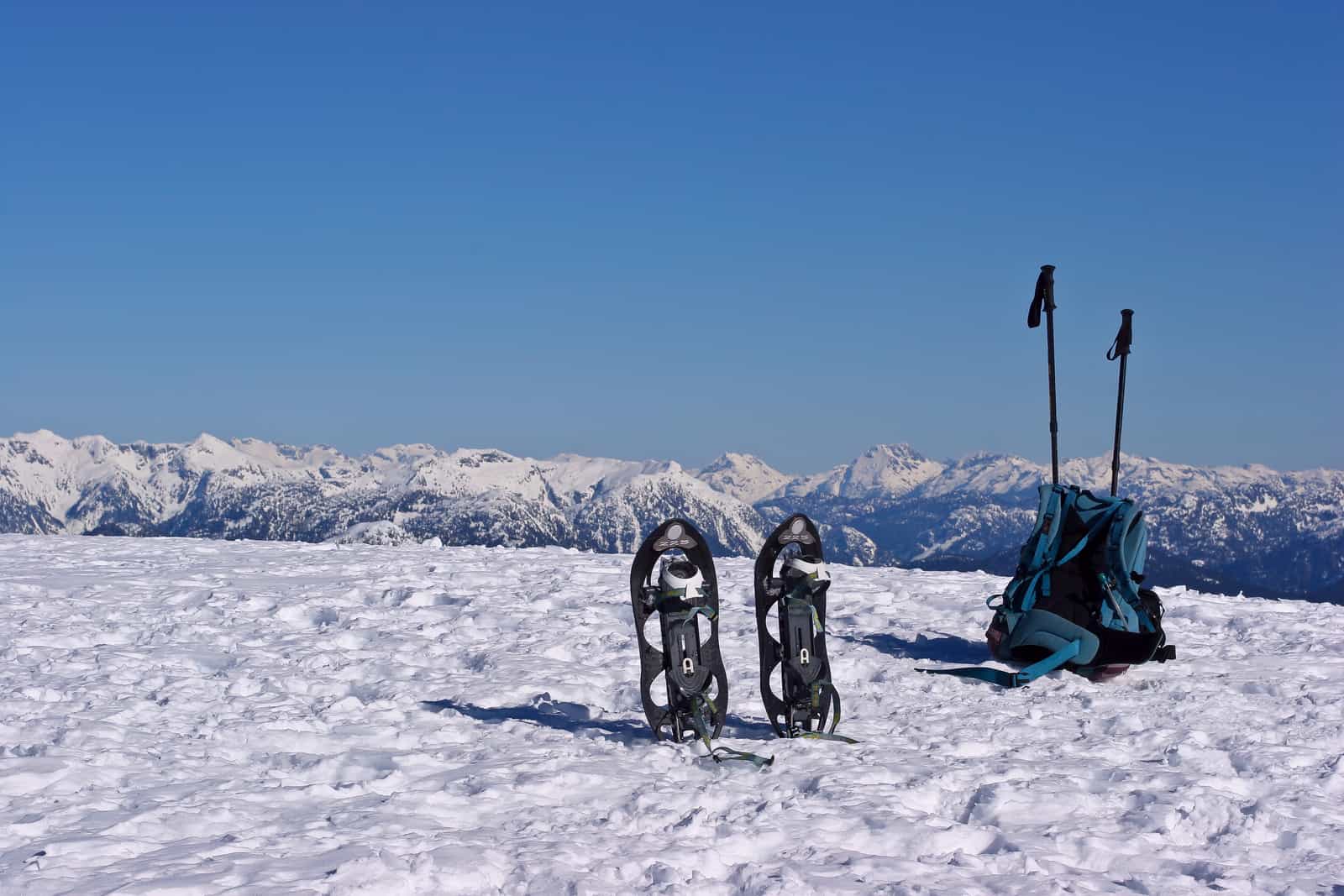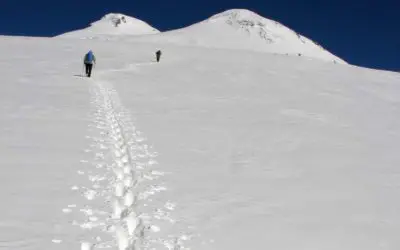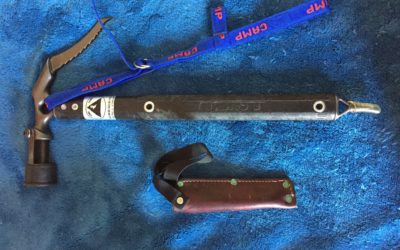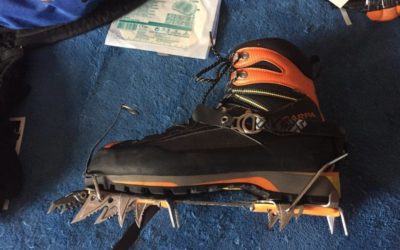
Sharpening your microspikes is better done sooner than later since your life can depend on it.
Think the horrendous situation where you slip and slide down the mountain because you couldn’t gain traction in the ice. Or – more realistically – you slip and get bodily injured.
To avoid this it is important that you are up to date on your equipment.
Mountaineering is a dangerous adventure that requires an obsession over details, such as what the sharpness of your microspikes is.
The key is to do it before the teeth become semi-circular in shape and don’t bite at all.
I would recommend one of the following solutions for sharpening microspikes:
-
Use a file. Combine with the use of pliers.
-
Use a grinding wheel.
-
Use a Dremel with a sharpening bit.
To sharpen microspikes, the easiest solution is to use a file. A file is cheap and easily usable, which are big advantages over investing in a grinding wheel or Dremel.
From experience, I think you also have to be very careful with the grinding wheel or Dremel not to overdo it. So be careful because it’s easy to take off to much.
Tips and tricks for sharpening microspikes
When I resharpen my spikes I usually grind a valley forming two points on each spike instead of trying to repoint each one. They seem to grip well. Bringing each spike to a point again makes a shallower angle to the point, making them less grippy.
One trick I learned is to leave the spikes on your boots while sharpening so you don’t have to hold the chain steady which is not easy to do. This should help a lot for all three sharpening techniques.
Determine if you need to sharpen all spikes. It may be that they are not all dull. Sometimes I don’t do them all, only a few on each foot.
Evaluate whether it’s worth your time to sharpen them, or if you should just keep the older dull pair for use on mixed rock and ice days, and use a newer sharp pair when it’s “no rocks.”
Finally, keep in mind that all this grinding is not good for you without some sort of respirator/filter. Abrasive blades lose their substance into the air in the form of stray silica (sand dust), I believe. By the way, stray silica causes cancer. Not suggesting not to save your spikes, just wear a mask, and I suppose eye protection…

Microspikes versus Crampons
I have always found a preference for crampons, especially on hard ice. Microspikes are not very well suited for hard ice.
Too much surface area (the spikes, the chains, the boot soles) distributes the load away from the spikes, preventing a good bite. I switch to crampons (or snowshoes) for hard ice.
Microspikes are best used for ‘’casual’’ ice hiking and they are great for getting better traction when hiking over packed snow.
A great advantage of microspikes is that they are compatible with all boots and most shoes.
Crampons, on the other hand, are not as idiotproof and might need special adjustment when paired with real mountaineer boots.
Energy efficiency is also a very important part of mountain climbing. Microspikes are more lightweight than crampons, and therefore you will save a lot of energy by switching to microspikes in lighter terrain.
Crampons are best used when there is higher angle ice or snow climbing.
Many crampons also have front points that are a must when climbing steep ice.
Conclusion
Depending on what equipment you have at home, there are many ways of sharpening microspikes.
For those that don’t have a grinding wheel or Dremel at home, I would recommend just sharpening with a file.
Remember to keep the microspikes on a pair of shoes while you sharpen. This will make the process a lot easier since the boots do so that you don’t have to hold and adjust the chains.
Evaluate whether it’s worth your time to sharpen them, or if you should just keep the older dull pair for use on mixed rock and ice days, and use a newer sharp pair or even a pair of crampons when there are “no rocks.”
Finally, It can be really hard to know what equipment you need when winter hiking or even traversing glaciers.
When comparing crampons with microspikes, I would recommend a defensive approach. Be very aware of the weather forecast, ask people (preferably experienced) that have climbed or hiked your location of choice about equipment and be ready to bail if you feel that you come underprepared. Happy Adventures!
Written by Felix

About me
Hi! I’m Felix. When I’m not spending time out in the mountains, I like to write about my hobbies. That is how Mountain Homies was created. On this site, I try to gather all the juicy information about Mountaineering that I have learned since I started. Happy adventures!
Related Articles
9 Pros and Cons of Climbing in Ski boots
You’re heading to some awesome back country ice climbing crags for the day. The prize if awesome: pristine ice climbing routes that…
Ice Axe maintenance: Sharpening, Cleaning & Storing
When I’m undertaking any form of alpine mountaineering or ice climbing, I always end up using my ice axe. Extensively. I’ve tried to…
How Sharp Crampons Should Be & How to File Them
In short, the front points of crampons should be sharp as knives while the bottoms of the crampons shouldn’t necessarily be as sharp as…
Stay Up to Date With The Latest News & Updates
Join Our Newsletter
The owner of this site is a participant in the Amazon Services LLC Associates Program, an affiliate advertising program designed to provide a means for sites to earn advertising fees by advertising and linking to amazon.com.



